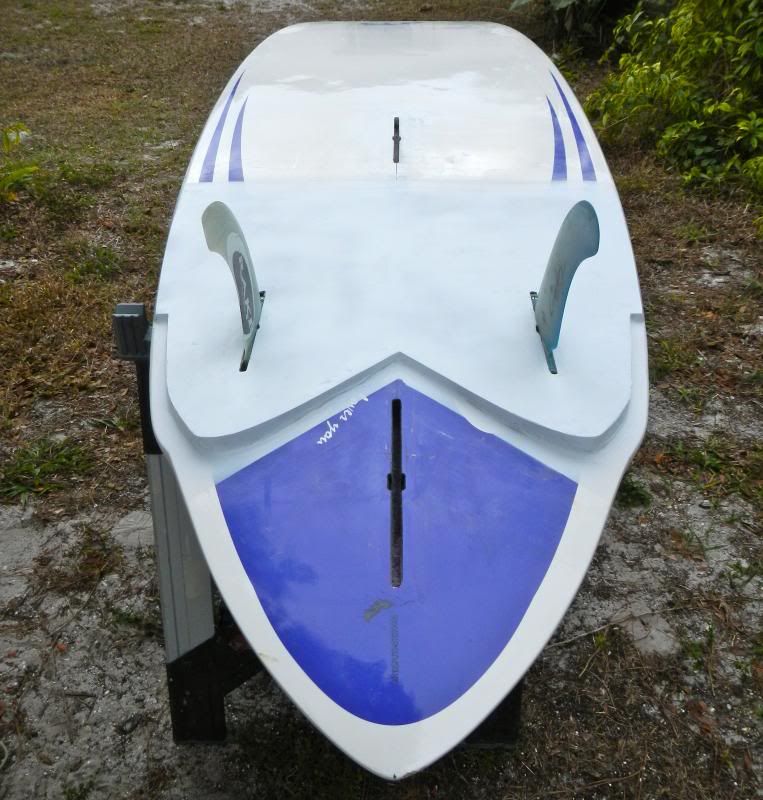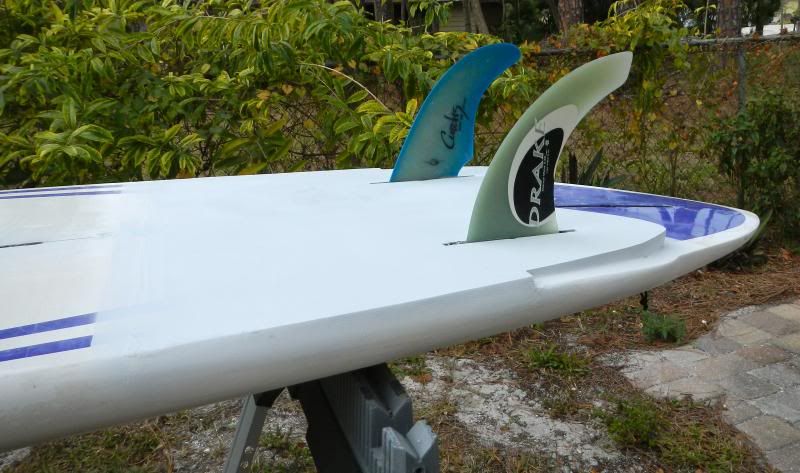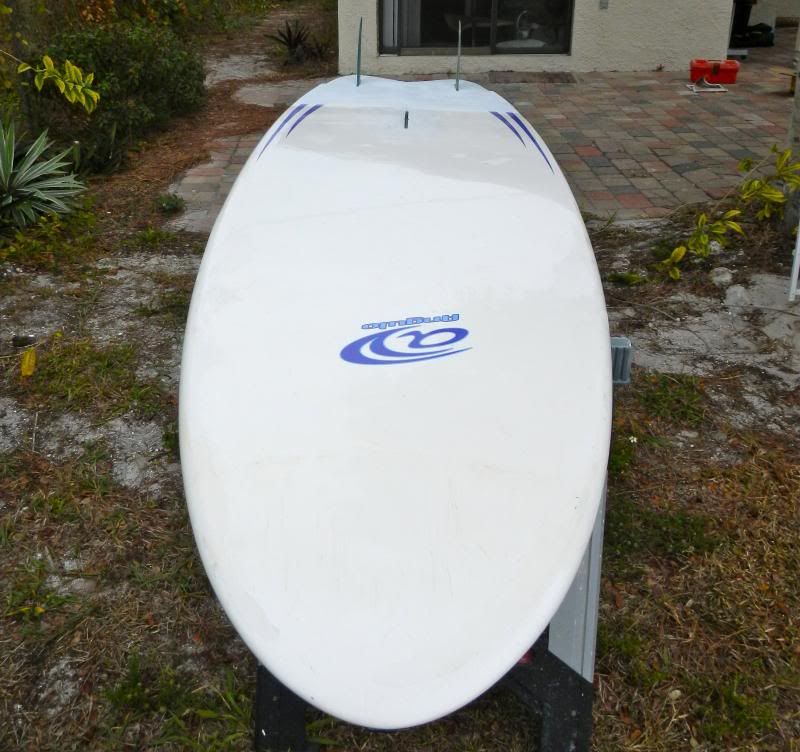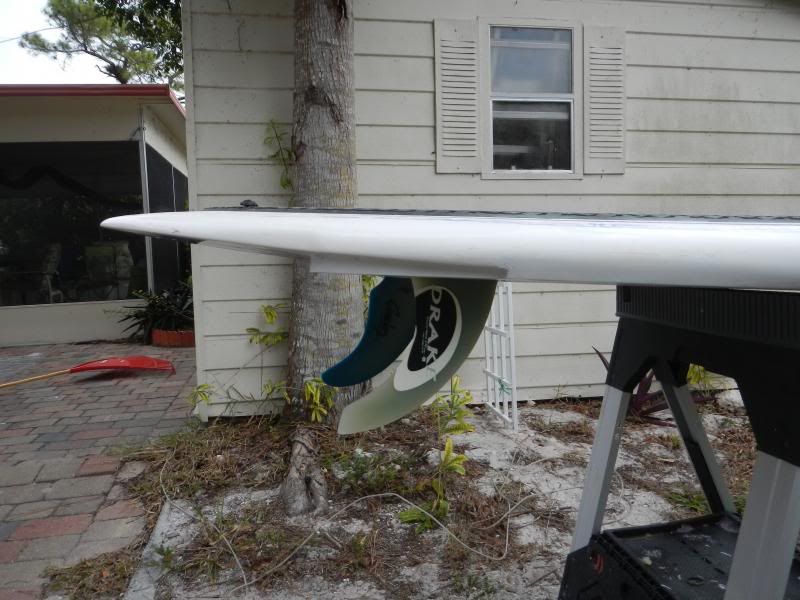Today I finished the elaborate windsurfing gear project that I've been working on since before Christmas; converting a standard SUP board to a twin-fin WindSUP with a step-tail. It was a ton of work, and I probably won't attempt anything so fancy in the future. That said, I like how it turned out. The outline of the step-tail platform, with its little wingers leading into a swallow tail, looks like it fits well with the twin fin positions. I'm also pleased with how I was able to transition the rails smoothly into the stepped-tailed section, adding a sharper release but keeping them moderately thin and tucked. The rocker of the step tail is very flat, but I kept the same amount of vee in the bottom that it hard originally, which I hope will help keep the ride smooth at higher speeds. Shaping a smooth transition from curved rocker to straight rocker where the step-tail begins was the hardest part. I think I messed that up a bit, ending up with a slightly concave instead of perfectly flat transition.





After sanding and painting the board today, I took it for a paddle in tiny, glassy waves at Wiggins Pass. I couldn't detect any difference in stability, but paddling in flat water felt slightly different. It may be that the step tail and the two larger fins add a bit more drag in displacement mode. To my relief, the board seems to catch waves just as easily as before the change, and there's no greater tendency for the nose to pearl or anything like that. Once on a wave, the acceleration is good, and I think the board may be faster than before. Turning and going sideways on the wave still seems easy, but I'll need bigger waves to really get the feel for the speed and turning differences. I've got a busy week coming up, but I might be able to get out with a sail on Tuesday afternoon. What I really want to figure out is if the board will plane with a sail now.






1 comment:
Let us know how it went with the second sanding job done!
Post a Comment